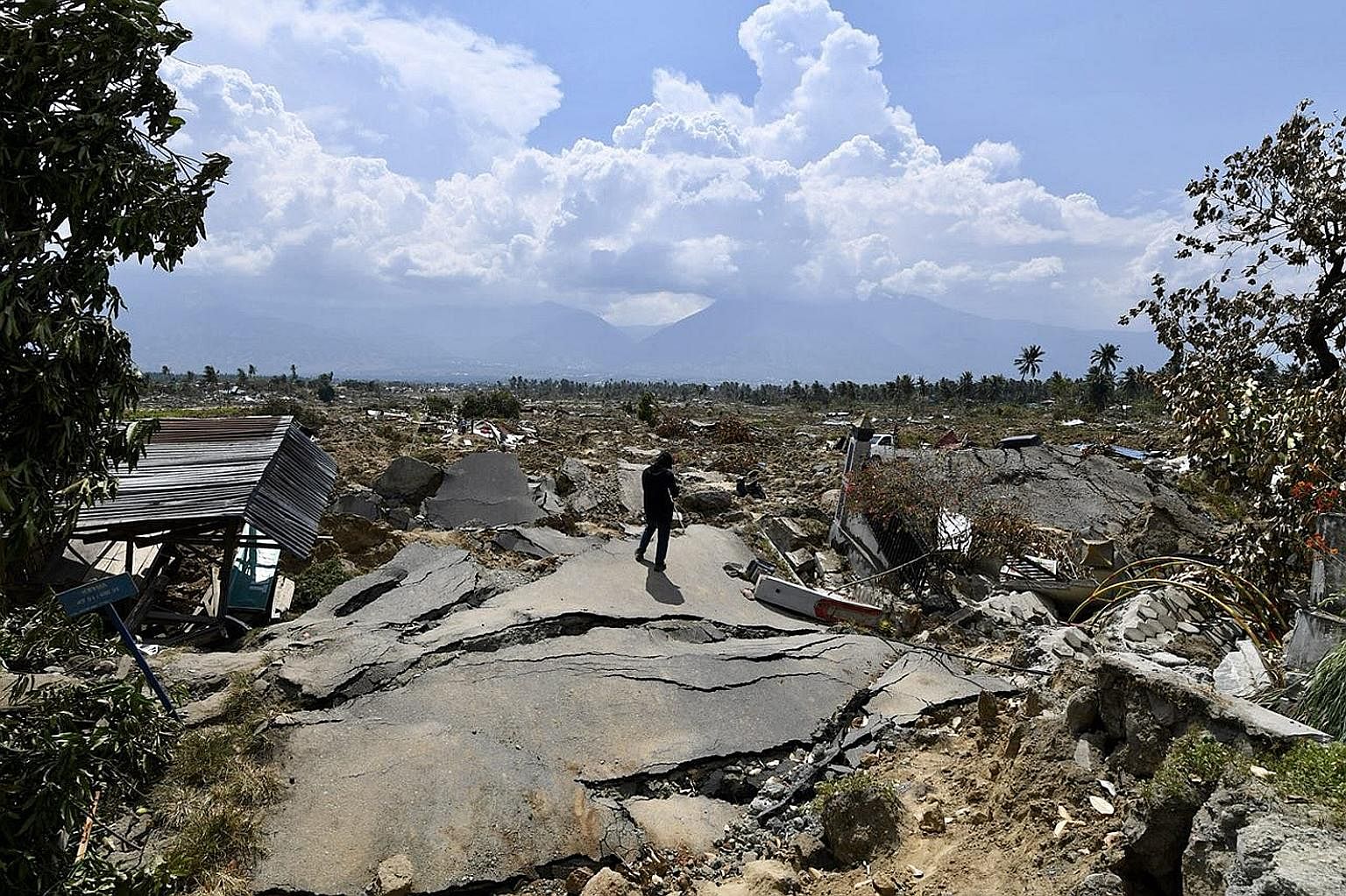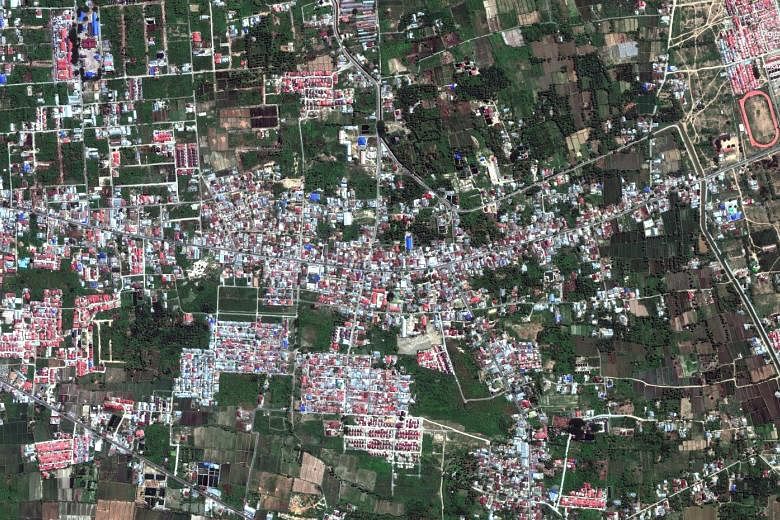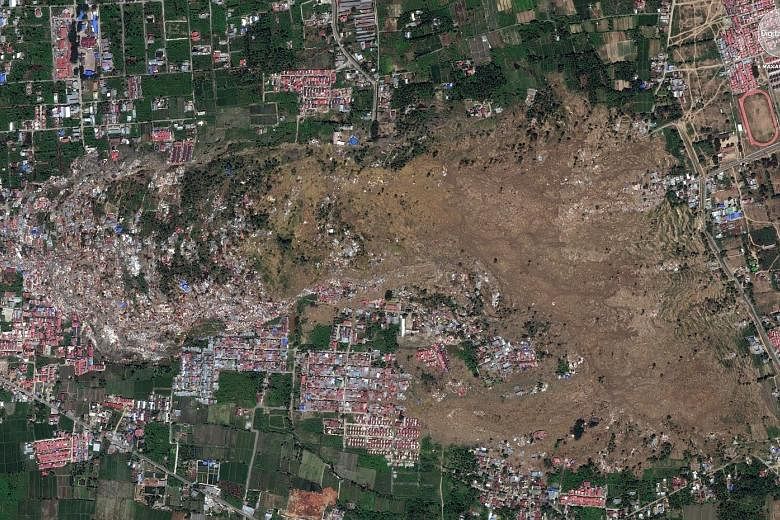The ground opened up and "swallowed" people, said Ms Wulansari.
"It was like a giant worm chasing us underground...
"The last time I saw my sister, I could see only her head. From the neck down, she was in the moving mud," the 18-year-old student told The Straits Times at a shelter on a hill near the remnants of her village in Central Sulawesi.
Petobo, on the outskirts of the provincial capital Palu, has been dubbed the "sunken village" after 700 houses were destroyed, mostly buried after a 7.4 magnitude earthquake struck the region last Friday.
More than 1,200 people were killed as a result of the quake and the tsunami that followed, and the death toll is expected to rise.
Residents said the massive tremor felt like a creature was moving underground as they were fleeing.
Some were flung several metres up in the air as the ground thrust out under their feet.
Others watched helplessly as their neighbours drowned in fast-flowing mud, never to be seen again.
"I held onto a log with my right hand, while my left hand was paddling to stay afloat. That lasted for several minutes, and my clothes were torn off in the process.

"I was nearly naked when I was finally rescued," said Ms Sunarti, who like many Indonesians goes by one name.
Three of her neighbours who were struggling nearby did not make it.
Another resident, Mr Wahid, 40, likened his ordeal to being in a cup of coffee being stirred.
"The ground rose as if it moved in a circle, then we saw flowing mud. This made people panic.
"The flowing mud took stones, sand and trees along with it," said Mr Wahid, who lost his grandfather, grandmother and other relatives.
Mr Abas Ismail, 52, said he saw a mosque and his nearest neighbour's house flung as high as the village's coconut trees before they slammed back down.
"The ground moved like a wave, but the sound was more like pouring rain falling on 'seng'," said Mr Abas, referring to the galvanised iron sheet widely used as roofing material for homes.
The tsunami that followed the earthquake did not swamp Petobo because it is too far inland.
But that was little comfort for its residents, since the area was hit by liquefaction, one of the most devastating effects of an earthquake.
The New York Times, in explaining the phenomenon, said that in addition to causing soil to flow like a liquid, it can also make land slump and sink.
But for it to occur, the soil must be relatively loose, waterlogged and shaken violently.
When The Straits Times visited the village, Mr Iwan Said, a 37-year-old civil servant, said that he found parts of his home 1km from its original site, along with that of his closest neighbour.
Indonesian President Joko Widodo yesterday visited Petobo as he continued with a tour of the disaster-hit region to check on relief efforts.
"I come here today to check on the current real condition after I gave the orders four days ago related to evacuation (of bodies), power, fuel and logistics supplies, particularly the treatment of those injured by the disaster," the President was quoted as saying.
Relief officials, however, provided a grim assessment, saying the village had been "wiped off the map".
"They are finding devastation and tragedy everywhere," said Ms Iris van Deinse, of the International Federation of Red Cross and Red Crescent Societies, in a statement.





